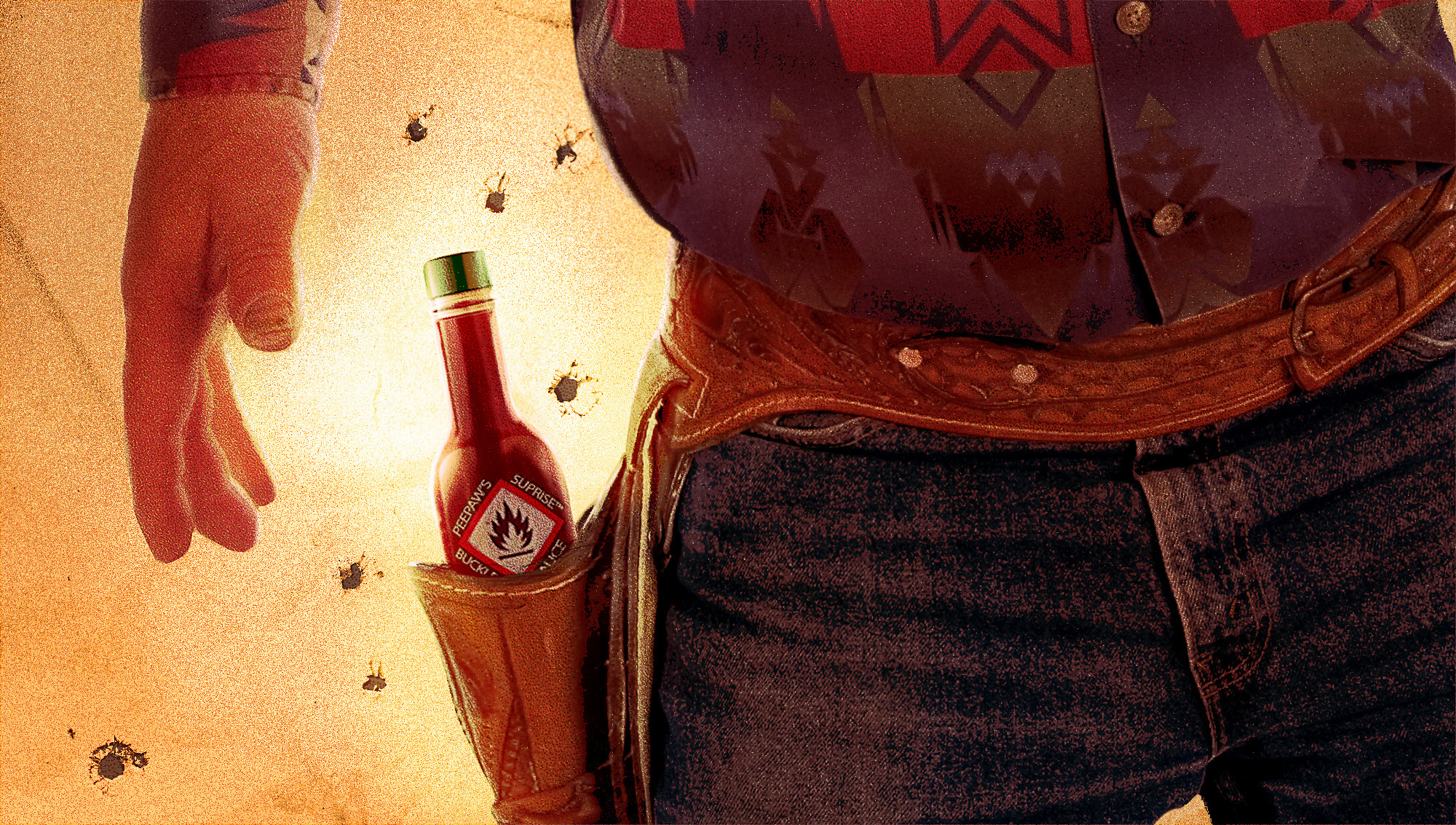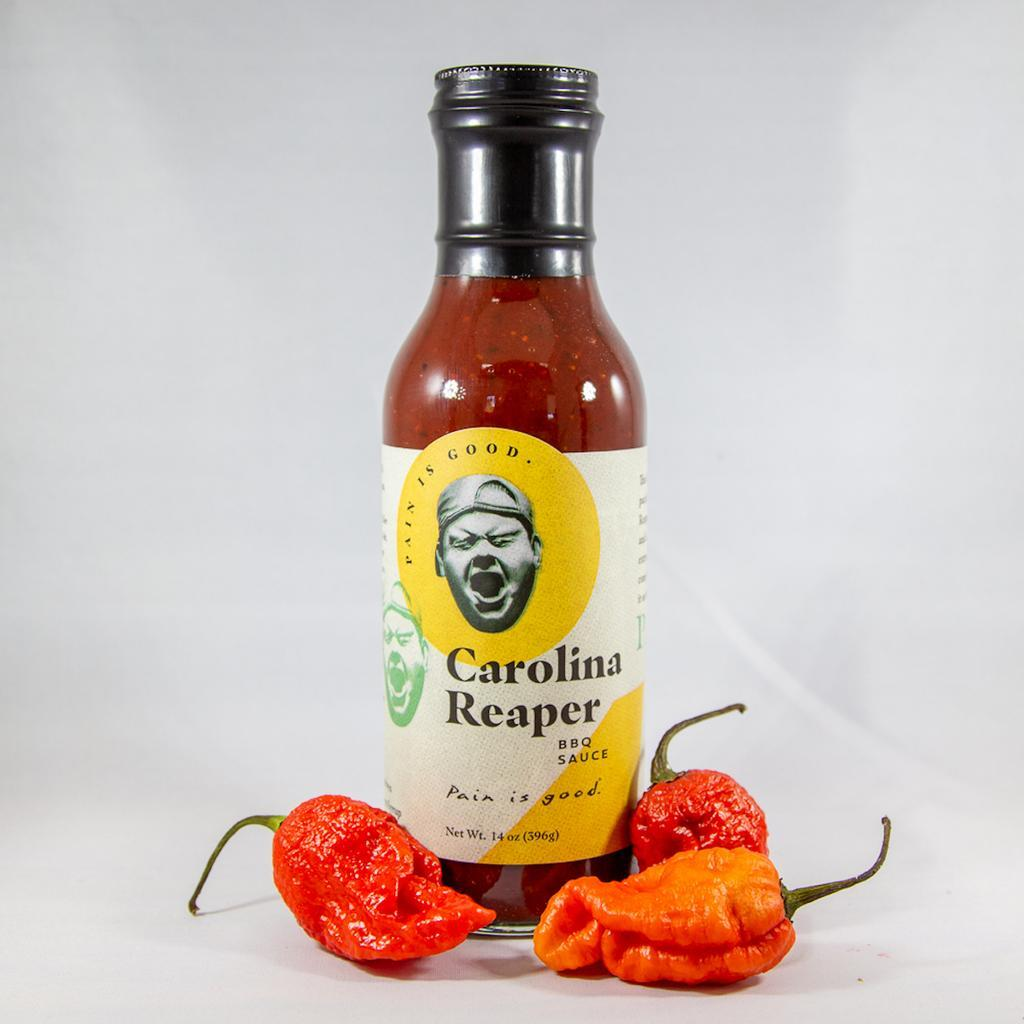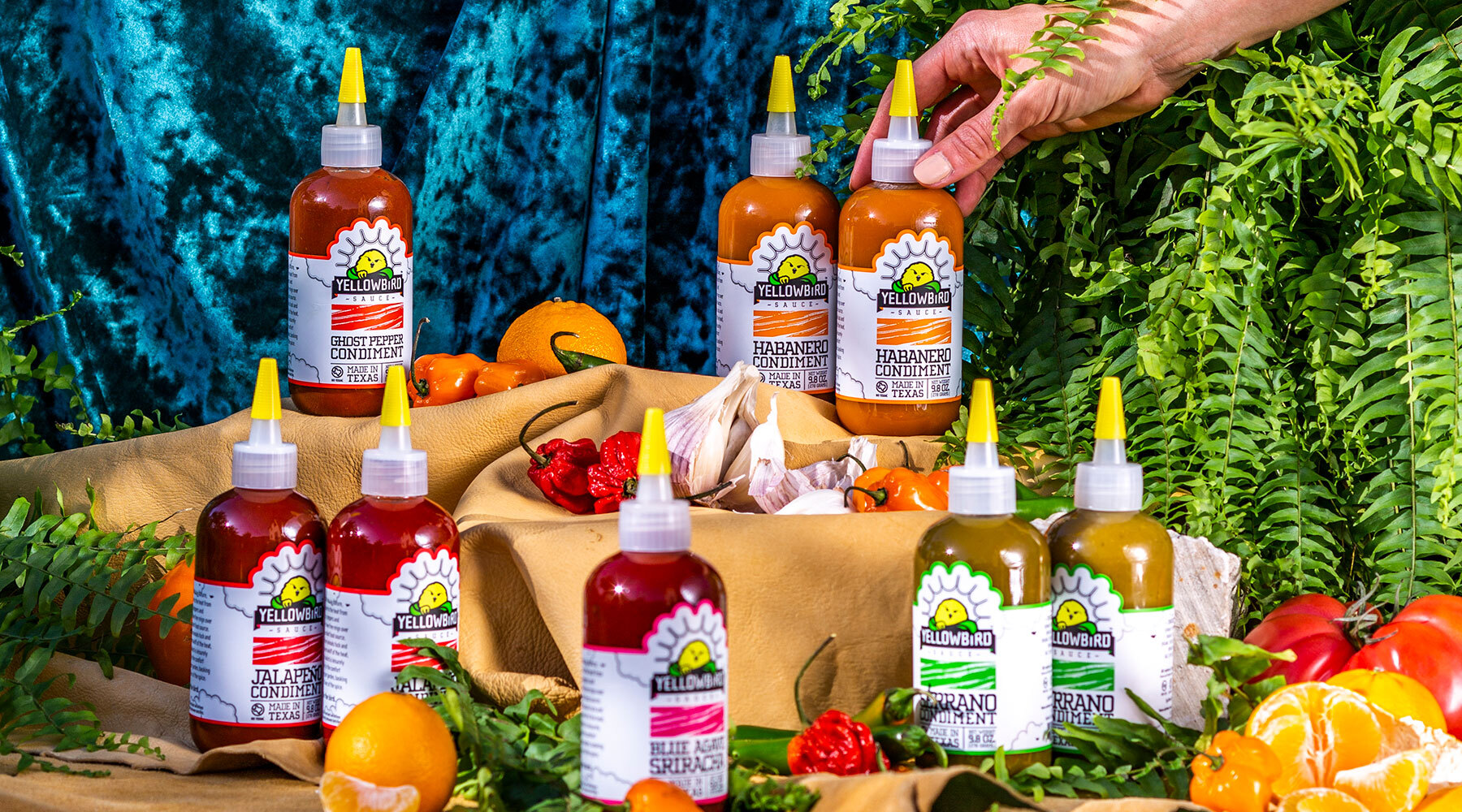These Hot Sauce Connoisseurs Are More Than Willing To Shit Their Brains Out
An entire condiment category profits off of the promise of gastric distress.
We may receive a commission on purchases made from links.
The ground shakes—slowly, at first, but then more urgently. A deep grumble comes from within, like the infernal bellowing of a minotaur trapped within the Earth's gnarled crust. Wild animals flee in a grand stampede, attempting to escape near-certain devastation. A youthful Kevin Bacon shifts his weight, stretching catlike in his skintight denim and dusty cowboy boots. "We decided to leave town just one damn day too late," he says, shaking his head.
This is a scene from Tremors, Ron Underwood's 1990 worm horror classic. It's also a rough depiction of the gastric anguish that afflicts many of the world's irritably-boweled hot sauce connoisseurs. But that doesn't stop fans from seeking wilder and wilder spice experiences. In fact, for some hot sauce fans, the volcanic diarrhea is half the fun. So how did Big Hot Sauce manage to turn its shitty reputation into a selling point?
What does hot sauce do to the digestive system?
Marketed under names like "Ass Blaster," "Shit the Bed," and "Professor Phardtpounder's Colon Cleaner," today's hot sauce market hinges on the promise of toilet trauma. That makes sense given the presence of capsaicin, the active compound in hot peppers that gives them their red-hot spice. Capsaicin also serves as a chemical irritant in mammals, which explains the agony of accidentally splashing pepper juice into your eye.
Capsaicin also activates a protein in the body known as vanilloid receptor 1. That protein sends our brains a message: "Help, I'm burning and need pain relief!" The brain gets the message, quickly releasing endorphins to mute the pain. And if you've ingested capsaicin, the small intestine has a similar defense mechanism, quickly pushing the capsaicin through the gut to rid your system of the irritant. That leads to—you guessed it—a visit from the esteemed Professor Phardtpounder. For some hot sauce fans, that's a small price to pay for the thrill of serious spice.
Brooke Knisley, 31, is one of those fans. In 2015, Knisley suffered a traumatic brain injury that resulted in ataxia, neuropathy, and digestive complications. "Post-accident, I found my gut was suddenly super temperamental when it came to pretty much everything: meat, dairy, spice," she says. "I was able to kick dairy and meat no problem, but living isn't living without spice, y'know? I kinda figure it's a trade-off: there's so much I can't enjoy anymore (like alcohol, eggs Benedict, etc.) that I can shit my brains out every so often and the benefits outweigh the terrible toilet time."
Knisley is willing to brave anal hellfire in exchange for a hearty dose of spice. But for hot sauce mavens like 30-year-old Joe Hehl, the inevitable diarrhea is actually a good thing—a cleanse of sorts. "I am a proud member of the IBS club and sometimes only spicy food can lighten my load," Hehl says, calling spice "a match to a powder keg." While Hehl sticks with classic Cholula for his everyday spice needs, he's also been known to purchase extra spicy products when the going gets tough—for example, "intentionally buying the 2x super spicy ramen instead of the regular," Hehl says. "It does help expedite the process more than its less spicy counterpart."
The intestinal adrenaline rush of hot sauce
Knisley chugs hot sauce in spite of the diarrhea factor; Hehl chugs it because of the diarrhea factor. But there's a third category of hot sauce consumer: spice freaks who seek out the most painful hot sauce experience money can buy—and all the intestinal distress that goes with it—as an ongoing physical challenge.
That's the case for 26-year-old Ian Glazer, who calls himself a "very competitive person" and uses hot sauce as a way to test his limits. "I like to see what my body can handle," Glazer says. "I'm getting older every day, so I don't know much more I can handle moving forward. I have to see what my body can do while I'm still young."
Glazer recalls a specific incident in Sarasota, Florida, home to a hot sauce chain called Pepper Palace. "They had a hot sauce called Death Sauce, and I wanted to test it out," he says. "I had to sign a waiver beforehand, and they only give you one chip and maybe a teaspoon of the hot sauce. I bit into it and instantly started sweating profusely." Half an hour later, Glazer and his girlfriend left the shop to walk around—but the deathly capsaicin lingered. "I was nauseous all day, and the next day it really affected me in the bathroom," Glazer says. "It was very challenging." Would he try the Death Sauce again? "Oh, definitely," he says, laughing.
It's no surprise that adrenaline junkies like Glazer turn to hot sauce to get their kicks. As mentioned above, capsaicin triggers a rapid endorphin release, which can create feelings of euphoria. Pain triggers endorphins; endorphins make you happy; thus, gobbling down little pain snacks is a one-way ticket to Pleasure Town. That's the idea behind brands like Pain Is Good, a sauce line with a label featuring a decorative screaming face. That's also the logic that prompted Jackass's Steve-O to shove wasabi up his nose in a very funny display of idiotic machismo. Ultimately, it's that machismo that still drives the Western hot sauce industry's hyper-masculine marketing.
How hot sauce marketing caters to the poop-obsessed
Take a look at hot sauce sales demographics, and it's easy to see how companies like PuckerButt Pepper Company prioritize their marketing budgets. "In general, hot sauce is male-dominated, and the easiest thing to do is make a hot sauce for a male demographic," says Erin Link, the co-founder and creative director of hot sauce company Yellowbird Foods. "Instead of reinventing the wheel, [brands] double down on what is already proven." That means leaning into diarrhea, a phenomenon which, despite its universal hilarity, is firmly branded as A Dude Thing.
It also explains the machismo still central to hot sauce culture, despite the fact that women between the ages of 18 and 44, as well as women between the ages of 55–64, represent a growing hot sauce consumer demographic, per industry insights company Progressive Grocer. But the diverging hot sauce demographics do represent a unique challenge for sauce makers: lean into the traditional hyper-masculine approach, or produce a more nuanced product?
"There are studies that show the men who engage with hot sauce do so primarily for the recognition and praise of being able to 'handle their heat,'" Link says. "The women who engage with hot sauce are doing it for the sheer sensation from hot peppers, and not the recognition or potential praise." Emerging sauce companies—Yellowbird, for example—are tweaking their approach with that in mind. Yellowbird's sauce packaging comes in a number of vibrant, aesthetically pleasing colors with a tidy logo. It's not feminine, per se—but it's a far cry from sauces like Ass Blaster, which is sold in a novelty wooden "outhouse." Link explains: "The smaller makers are typically crafting recipes and designs/branding that satisfy their personal preferences, and they span a wide range of branding and graphic styles."
The future of the hot sauce industry
Moving forward, hot sauce makers have to walk a tightrope: Is it possible to create an edgy, salacious product without alienating consumers who, frankly, don't like the idea of complete O-ring destruction in pursuit of self-congratulatory masculinity? Beyond that, is there a way to acknowledge the joy of extraordinarily painful hot sauce consumption—looking at you, Hot Ones—while also moving away from a sadomasochistic market? Is that even necessary?
Probably not. I'd argue that nuanced hot sauces can coexist peacefully with your Ass Blasters and Shit the Beds. Like any novelty food product, extreme hot sauce is worth approaching with moderation and flavor in mind. "In general, the hot sauce industry is becoming more focused on flavor first," Link says, pointing out that even "true chiliheads" seek out memorable, nuanced notes in their go-to sauces. Glazer confirms that. "As I'm exploring new everyday hot sauces, I'm definitely looking for something with flavor," he says. I love a little bit of sweetness mixed with the spice."
Ultimately, there's plenty of room in the hot sauce scene for casual consumers and diarrhea fiends alike. Poop is funny. Pain is funny. Pain that causes poop is funny. But if you're giving yourself frequent gut blowouts in pursuit of impressing the dudes in your social circle, it might be time to consider another hobby. I hear Frisbee golf is nice.


